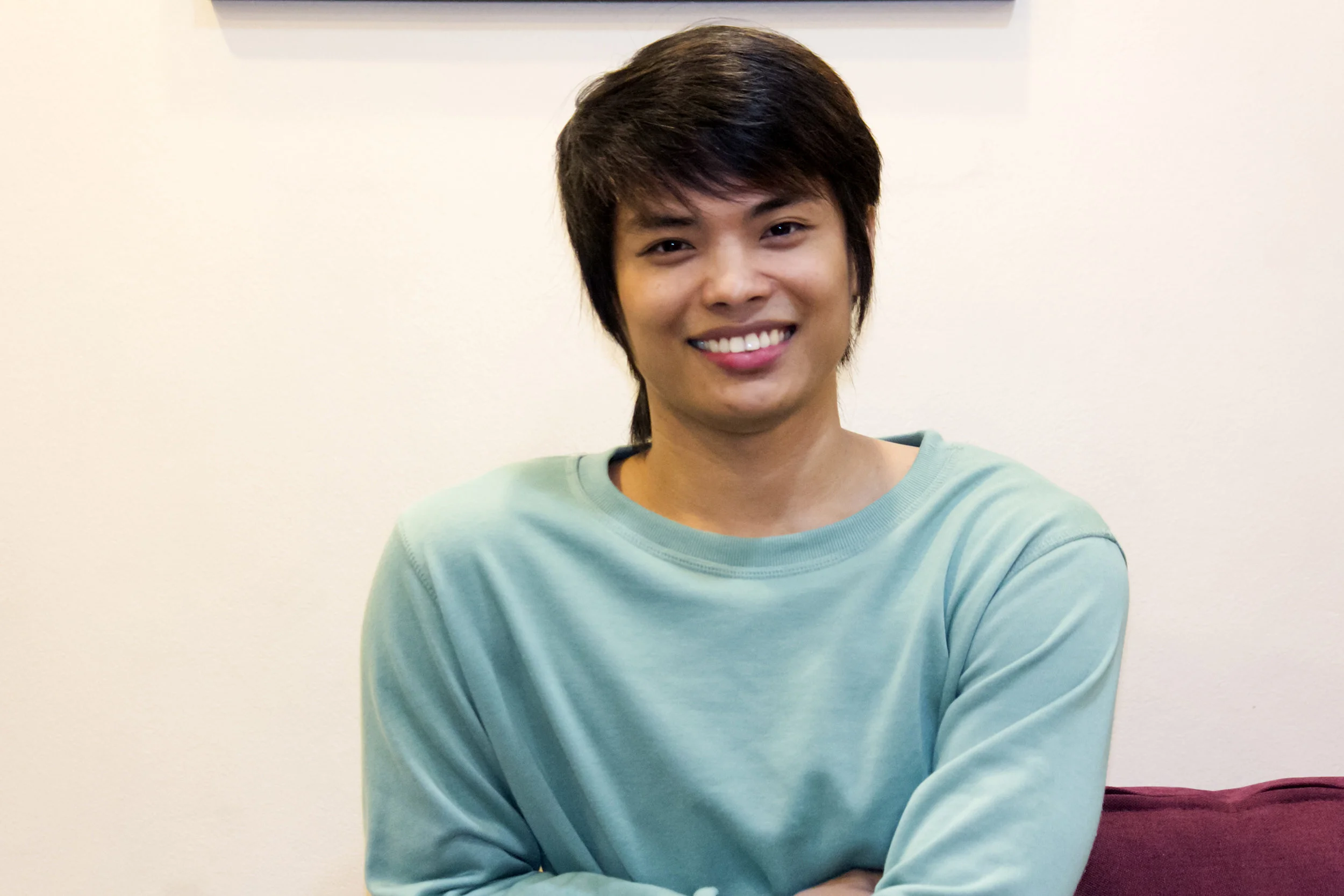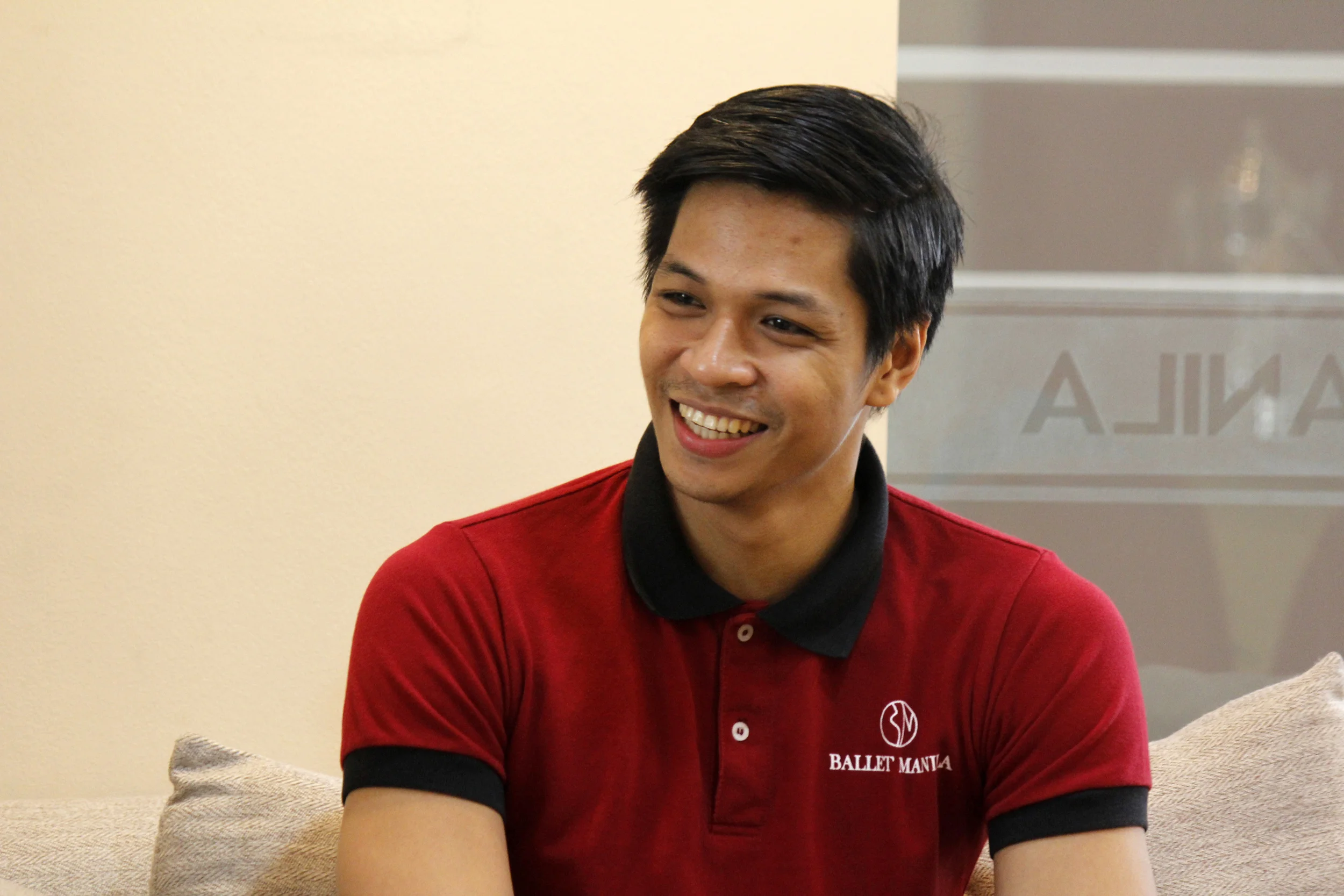Elpidio Magat: More highs than lows in ballet
Soloist Elpidio Magat has learned to live with stage fright by focusing of the choreographer and getting to know the character he is portraying. Photo by Jimmy Villanueva
By Jv Ramos
There is something so intriguing about Elpidio Magat. Though taller than many of the male dancers in Ballet Manila, this soloist does not have an intimidating presence. He’s noticeably quiet with a youthful aura; but when spoken to, he shows admirable maturity and wisdom, especially when it comes to his art.
Elpidio was memorable as Prince Siegfried in Swan Lake. Photo by Ocs Alvarez
One, however, doesn’t need to hear Elpidio speak to be aware of how serious he is about ballet, for this could easily be spotted when he’s performing. Once he enters the stage, our subject is no longer the shy tall guy who juggles his college education and ballet; he instead is an iconic character, who aids in bringing a well-loved tale to life.
Among the tales that this danseur has helped bring to life are: Swan Lake, where he danced the role of the carefree and adventurous Prince Siegfried; Le Corsaire, where he became the protagonist’s devoted slave named Ali; and Arachnida, the famous neo-ethnic piece by choreographer Agnes Locsin, wherein he was the male spider. And, for BM’s upcoming performance season, Elpidio will be one of those who will breathe life into Ibong Adarna. The audience will come to know him as Prinsipe Pedro, the self-absorbed and unkind prince.
Asked how he’s able to hide his reserved nature and portray these dauntless characters, Elpidio explains that it all boils down to practice. “Na-notice ko po na kapag memorized ko na po ‘yung routine, mas nailalabas ko na ‘yung confidence ko para maging ‘yung character (I noticed that when I know the routine by heart, the more I’m confident to play the character).”
In what Ballet Manila artistic director and CEO Lisa Macuja-Elizalde describes as the “Swan Lake switch-around,” Elpidio took on the role of the prince in Ang Prinsipe ng mga Ibon – one of the featured stories in Tatlong Kuwento ni Lola Basyang. Photo by Ocs Alvarez
He, however, clarifies that shyness and jitters don’t completely go away no matter the number of rehearsals. “Normal naman iyan sa ballet, whether sa pag-ko-compete or kung bibigyan ka ng isang role. (Stage fright will always be part of ballet, whether you’re partaking in a competition or tasked to dance in a season performance).”
What does he do then to calm himself down? Unlike other ballet dancers who have their physical routines, Elpidio stays quiet and just conditions his mind to perform the task in hand as beautifully as possible. “Iniisip ko ‘yung mga heads, ‘yung teachers – gaya ni Ma’am Lisa at Sir Shaz (referring to Ballet Manila co-artistic directors Lisa Macuja-Elizalde and Osias Barroso). Alam ko na kailangan kong gawin ito nang tama para sa BM. (I just think of the company heads, the teachers – Ma’am Lisa and Sir Shaz. I know that I just have to do it right for the company).” Elpidio then expresses that in order to present the audience with a good show, each dancer would have to play his part.
One of his most embarrassing moments as a dancer happened in Ireland where he was featured in an excerpt from Romeo and Juliet. He was unable to make it to the stage for more than 16 counts because he was too concerned about packing his things backstage. “So nandu’n si Tybalt sa stage, hinahanap-hanap nang matagal ang kanyang kalaban. Nag-adlib siya (So there was Tybalt looking for his opponent onstage for a long period of time. He had to improvise).”
In fighting form: “Ballet is hard when you don’t have 100 percent control over your body,” said Elpidio who has only recently returned from a back injury. Photo by Ocs Alvarez
“Hindi na mauulit iyon! (I won’t let that happen again),” Elpidio vows. “Feeling ko nu’ng nangyari iyon, tumanda na ako kaagad. (I felt that I became an adult immediately after that experience).” True to his word, Elpidio bettered himself after that 2011 incident, and soon was promoted from demi-soloist to soloist and became a force to be reckoned with in competitions abroad.
Performing the all-male choreography, Aramica, best illustrates how far he has come – from a clueless ballet student to a serious dancer who is fully aware of his presence on stage. Photo by Jojo Mamangun
His third place win at the National Music Competitions for Young Artists (NAMCYA) in 2009 was followed by a bronze medal in the 2012 Asian Grand Prix and a Semi-Finalist spot in the 4th Beijing International Ballet Invitational for Dance Schools, which was held in the same year. In 2013, he took home the silver in the Pas De Deux Division of the Asian Grand Prix. And, in 2015, he emerged victorious again in the Asian Grand Prix: he won bronze in the Senior Division and silver again for the Pas De Deux Division.
“All my achievements are important to me. Pinaghirapan ko iyon so proud ako sa lahat. Mahalaga sa akin na na-represent ko ang BM at ang bansang Pilipinas. (I worked hard on those, so I’m proud of all my wins. It’s important to me that I was able to make the company and my country proud),” says the danseur.
Admittedly more serious than his peers, he exerts his influence over his younger “brothers” – Anselmo Dictado and Rudolph Capongcol – in Ballet Manila’s upcoming production of Ibong Adarna. Photo by Jimmy Villanueva
But perhaps, what’s more admirable is the way he progressed from a clueless ballet student who wanted to be a soldier to a very dedicated soloist. According to Elpidio, when he performed ballet for the very first time, he wasn’t aware of what was happening. It was a recital performance of Enchanted Garden. “Sa sobrang gusto kong manood, di ko na alam kung ano ang nangyari… Tapos, biglang kailangan na raw mag-exit. Buti na lang nasa pinaka-left ako. Di ako masyadong napansin. (I was so eager to watch the older dancers perform that I didn’t notice what was happening around me… All of a sudden, they were instructing us to exit already. Fortunately, I was positioned in the leftmost area of the stage. The audience didn’t notice me).”
Present-day Elpidio isn’t just focused and all-grown up; he’s able to influence his fellow cast members. When Anselmo Dictado, who plays the youngest prince Juan, begins laughing at the miming scenes and Rudolph Capongcol, who plays Diego, joins in, it’s Elpidio who tries to hold the situation together and maintain their characters. “Ako na ‘ata ang pinaka-seryoso sa aming tatlo (I am perhaps the most serious among us three),” he laughs.
The three princes of Ibong Adarna in rehearsal with choreographer Gerardo Francisco. Photo by Jimmy Villanueva
Moreover, the soloist sees his place in the company as a great honor, and is committed to serving BM with his talent. “Iba ang ibinibigay ng BM compared to other companies, (The opportunities that BM offers is very different from other companies),” says Elpidio, who joined BM in 2005.
“So far, the hardest challenge for me is coming back from an injury. A year ago, I had a surgery on my back, so I stopped dancing for more than a year. Ballet is hard when you don’t have 100 percent control over your body.”
Here, our interview sounds more serious than ever; but Elpidio and his fellow-soloists quickly change the mood by affirming that ballet is nevertheless fun and worth the sacrifice.
Elpidio values his achievements which he considers a reflection of how well he represents Ballet Manila and the country. Photo by Jimmy Villanueva







